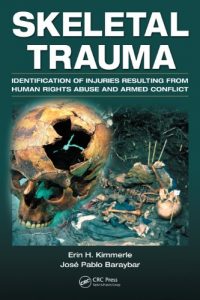Providing a contextual background, the opening chapter discusses international forensic investigations into Human Rights violations through international tribunals and other emerging judicial systems. The second chapter presents protocols for systemic data collection and methods for the differential diagnosis of wounds to classify and interpret mechanisms of injury. Organized topically, the remaining chapters evaluate blasting injuries, blunt force trauma, skeletal evidence of torture, sharp force trauma, and gunfire injuries. Each chapter discusses wounding mechanisms, wound pathophysiology, relevant legal examples, and case studies.
Twenty-six leading scholars and practitioners from anthropology, pathology, and forensics contribute their research, cases, photographs, and extensive fieldwork experience to provide 16 representative case studies. Taken from human rights violations, ethnic and armed conflict, and extra-judicial executions throughout the Americas, Europe, and Asia, all evidence in the examples is interpreted through an epidemiological model and set in a legal framework. Several of the exemplary studies, including those from the Balkans, have already been presented as evidence in criminal trials.



